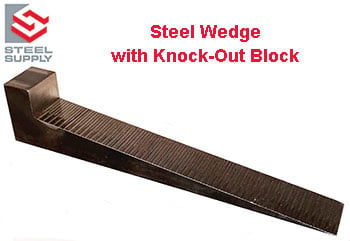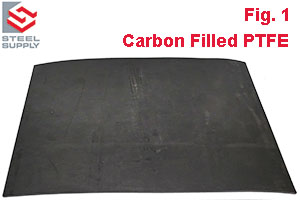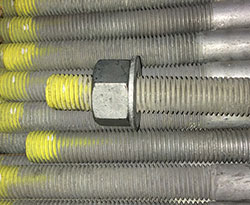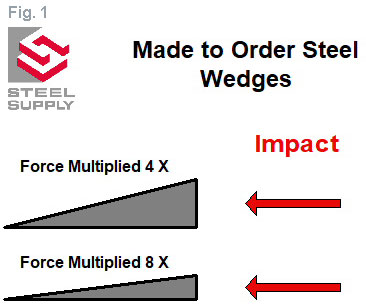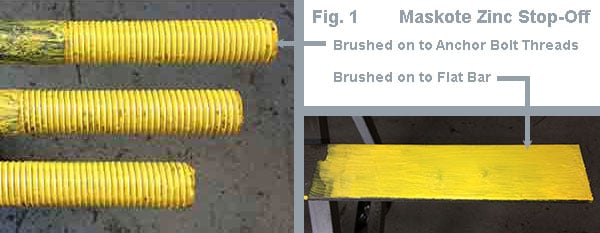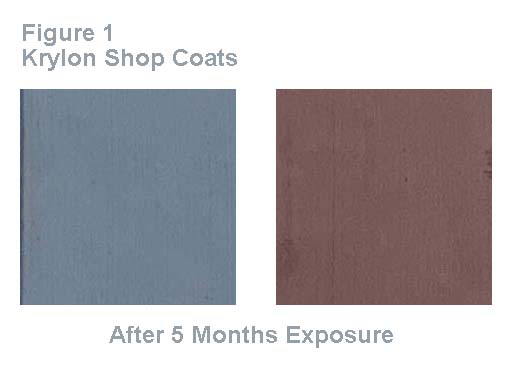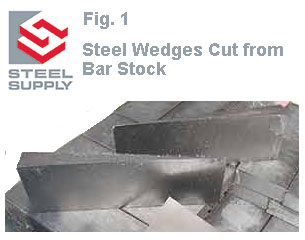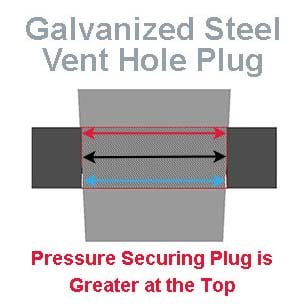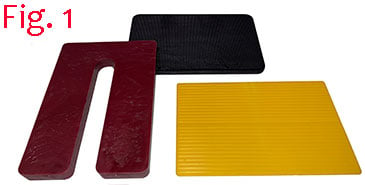Slotted Steel Shims and Hot Dip Galvanizing: Increase Expedience and Lower Cost
Preparation in advance leads to The Steel Supply Company's ability to anticipate and fulfill the steel fabricator's needs.
Frequently, The Steel Supply Company receives orders for slotted steel shims that are hot dip galvanized. While a shim is seemingly simple, there are a few considerations that a steel fabricator should take into account when placing an order. The most important of these considerations are manufacturing quality and the hot dip galvanization process.
Read More
Tags:
Steel Shims,
Hot Dip Galvanizing,
Slotted Shims,
Steel Coatings,
Slotted Steel Shims
Steel Wedges of all sizes and dimensions remain one of the simplest products The Steel Supply Company manufactures, yet also one of the most difficult to manufacture cost effectively. The 17 standard sizes we keep in stock are Drop Forged Wedges. This is the most economical manufacturing method. Made to order dimensions require the part be made manually which is more time consuming, but as long as it is a simple wedge the process remains straightforward.
Read More
Tags:
Wedges,
Steel Wedge
Slide Bearings: Reduce Lead Time and Cost
Modest adjustments to design can result in significant economic benefits.
Note: For purposes of this discussion Teflon® is trademarked by the DuPont Corporation, Fluorogold® is trademarked by Saint-Gobain.
Read More
Tags:
Teflon Slide Bearing,
Bearings,
Fluorogold Slide Bearing
The Steel Supply Company stocks round bar from only the best U.S. manufacturers like Nucor, CMC and Steel Dynamics. Steel round bar is stocked in F1554 grades A36, grade 55, and A-105. While not included in the ASTM F1554, round bar grade A449 is sometimes called out on DOT or transportation projects. The Steel Supply Company carries an ample amount of A449 bar, as well.
Read More
Tags:
S-1 supplement,
Anchor Bolts,
Bent Anchor Bolts,
Cut Thread,
Galvanized Anchor Bolts
The Steel Supply Company provides steel wedges to Steel Fabricators, Concrete and Masonry Contractors and the general construction trades. Often the customers' requirements can be met with stock sizes as shown in our catalog.
Read More
Tags:
Steel Wedges,
Steel Wedge,
Steel Wedges Made To Order
Maskote Zinc Stop-Off is the best solution we have found for keeping Hot Dip Galvanizing Zinc off areas of steel where it is un-wanted. Figure 1 shows tests that were performed in our factory. The Zinc Stop-Off was applied, the steel sent out for galvanizing, and when returned wire brushed to remove any residue or caked on zinc.
Read More
Tags:
Hot Dip Galvanizing,
Maskote Zinc Stop-Off
Paint and Coatings are a universe of options and complexities. Fortunately for the steel fabricator the scope is limited by the requirements. Priming forms the basis of the coating system and often that is the only coat the steel will receive. Most of our customers prime steel in red or gray. Some of the miscellaneous and ornamental fabricators choose black. A few, for marketing purposes, choose their own color, such as green or blue to stand out on a job-site so anyone seeing the steel knows it was their work. Regardless of the color the basic primer has one function. Prohibit rust until the structure is enclosed.
Read More
Tags:
Industrial Maintenance,
Steel Coatings,
Steel Primer
When manufacturing made to order steel wedges there are a number of ways it can be done and usually the configuration dictates what method is selected. Some of these are outlined in a previous blog, Steel Wedge Manufacturing. The Steel Wedge we are focusing on in this conversation is required as part of a Fluorogold® or Teflon® Slide Bearing Assembly. Length is 20", Width is 14". Thickness starts at 1/2" and tapers down to 1/16". The unique size of this wedge dictates the manufacturing process.
Read More
Tags:
Wedges,
Steel Wedge,
Slide Bearings,
Steel Wedges Made To Order
Vent Hole Plugs in Drilled and Punched Drain Holes vs. Plasma Cut Holes
Read More
Tags:
Galvanized Weep Hole Plug,
Galvanized Vent Plug
The Steel Supply Company provides shims to a variety of construction trades. Solid or Slotted, Plastic or Steel. It should be noted that by solid we mean non-slotted, or what is sometimes called "Plate Shim." The plastic version of these plate shims is still solid throughout. This is differentiated from some plastic shims on the market that are actually hollow in the core. Shims that are not solid cannot deliver the compressive strength required for most construction projects. The plastic shims shown in Fig. 1 are all solid throughout. Note the slotted plastic shim on the left of the image. It's actual dimensions are 4" x 6" x 1/2" thick, solid throughout, and is compression rated to support 90,000 lbs. before permanent deflection occurs. Based on its surface area, that is approximately 4,500 psi.
Read More
Tags:
Shims,
Plastic Shims,
Slotted Shims





